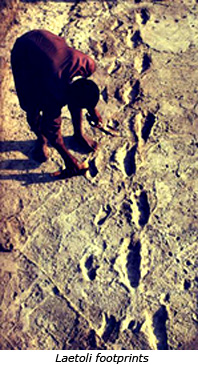|
|
|
 The ability to write history using material objects depends on what evidence has survived. For example, some organic material disappears in wet conditions or if not deeply buried. Thus, we may not have the flesh of animals which were consumed as food, but we may be able to determine from surviving bones which species they were. It is sometimes surprising how much evidence has survived. Past generations of archaeologists tended to look mainly for large objects and throw away the rest. Today's archaeologists record minute data. For instance, microscopic analysis of pollen can provide important information on plant life in the past. The ability to write history using material objects depends on what evidence has survived. For example, some organic material disappears in wet conditions or if not deeply buried. Thus, we may not have the flesh of animals which were consumed as food, but we may be able to determine from surviving bones which species they were. It is sometimes surprising how much evidence has survived. Past generations of archaeologists tended to look mainly for large objects and throw away the rest. Today's archaeologists record minute data. For instance, microscopic analysis of pollen can provide important information on plant life in the past.
Historians studying material objects also examine other kinds of evidence, such as writing, to understand the larger context. For example, we may learn about the function of a wooden implement excavated in the ruins of a 17th-century farmhouse only by reading a diary that describes its use. Conversely, seeing an object helps us understand a written description.
 
|



 The ability to write history using material objects depends on what evidence has survived. For example, some organic material disappears in wet conditions or if not deeply buried. Thus, we may not have the flesh of animals which were consumed as food, but we may be able to determine from surviving bones which species they were. It is sometimes surprising how much evidence has survived. Past generations of archaeologists tended to look mainly for large objects and throw away the rest. Today's archaeologists record minute data. For instance, microscopic analysis of pollen can provide important information on plant life in the past.
The ability to write history using material objects depends on what evidence has survived. For example, some organic material disappears in wet conditions or if not deeply buried. Thus, we may not have the flesh of animals which were consumed as food, but we may be able to determine from surviving bones which species they were. It is sometimes surprising how much evidence has survived. Past generations of archaeologists tended to look mainly for large objects and throw away the rest. Today's archaeologists record minute data. For instance, microscopic analysis of pollen can provide important information on plant life in the past.